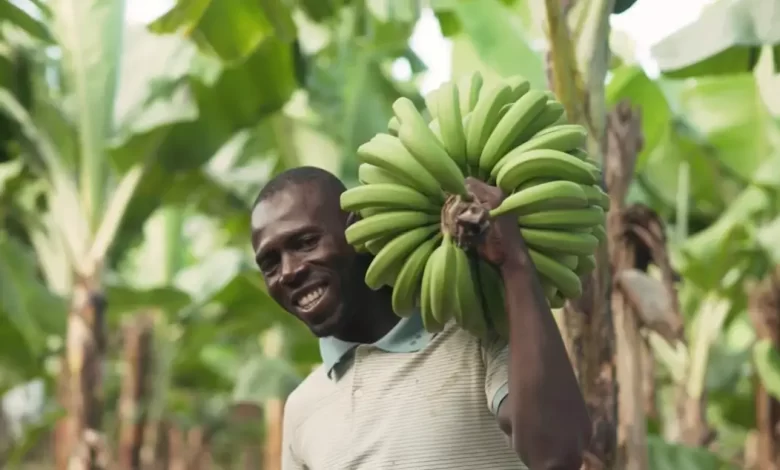The Dominica Banana Industry

The Dominica Banana Industry has been a cornerstone of the island’s economy and cultural identity for nearly a century. Emerging in the early 20th century, the industry became the primary source of income for thousands of families and played a pivotal role in shaping the island’s infrastructure, international relations, and socio-economic development. Agricultural prosperity, global market challenges, natural disasters, and a concerted push for sustainability and diversification shape the industry’s journey.
Historical Evolution of Dominica’s Banana Industry
Banana cultivation in Dominica dates back to the 1920s, when farmers sought alternatives to declining export crops like cocoa and coffee. The island’s fertile volcanic soil, abundant rainfall, and tropical climate provided ideal conditions for banana farming. Smallholder farmers began planting bananas alongside subsistence crops, gradually increasing production as the fruit’s export potential became evident. By the 1930s, bananas had emerged as a significant export commodity, primarily shipped to the United Kingdom.
The post-World War II era marked a period of substantial growth for the industry. In the 1950s, Geest Industries Ltd, a British company, agreed with Dominica farmers to provide shipping services, technical assistance, and a guaranteed market in the UK. This partnership enabled farmers to scale up production and improve quality standards. The Windward Islands Banana Growers Association (WINBAN) establishment in 1953 further strengthened the industry by uniting growers from Dominica, Saint Lucia, Saint Vincent and the Grenadines, and Grenada. WINBAN facilitated research, extension services, and collective bargaining, enhancing the bargaining power of small farmers.
Under the leadership of Edward Oliver LeBlanc, who served as Premier from 1961 to 1974, the government invested heavily in agriculture, viewing it as the key to national development. Policies supporting small farmers, including land reform, subsidies, and infrastructure development, were implemented. LeBlanc’s vision led to significant improvements in rural livelihoods, education, healthcare, and social services as the banana industry became the backbone of the economy.
Economic Impact and Infrastructure Development
At its peak in the 1980s, the banana industry was the backbone of Dominica’s economy:
- Employment: Approximately 10,000 people, about one-third of the workforce, were employed directly or indirectly.
- GDP Contribution: Bananas accounted for over 20% of the Gross Domestic Product.
- Export Earnings: The industry generated over 60% of export earnings, providing essential foreign exchange.
The industry’s success led to improvements in rural livelihoods, education, healthcare, and the development of social services. Infrastructure projects included:
- Road Networks: Improved rural roads facilitated transport from farms to ports.
- Ports: Upgrades to Woodbridge Bay Port in Roseau enhanced export capabilities.
- Communication: Expansion of electricity and telecommunications to rural areas.
Please note that some numbers are estimates due to limited data availability and varying sources, indicated with an asterisk (*).
Table 1: Banana Production in Dominica (1980–2020)
| Year | Production (Metric Tons) |
|---|---|
| 1980 | 34,000 |
| 1985 | 42,000 |
| 1990 | 48,000 |
| 1995 | 35,000* |
| 2000 | 20,000* |
| 2005 | 15,000* |
| 2010 | 12,000* |
| 2015 | 10,000* |
| 2020 | 8,000* |
* Approximate figures
Table 2: Banana Export Earnings for Dominica (1980–2020)
| Year | Export Earnings (USD Millions) |
|---|---|
| 1980 | $25 |
| 1985 | $30 |
| 1990 | $40 |
| 1995 | $28* |
| 2000 | $15* |
| 2005 | $10* |
| 2010 | $7* |
| 2015 | $5* |
| 2020 | $3* |
* Approximate figures
Table 3: Number of Banana Farmers in Dominica (1980–2020)
| Year | Number of Farmers |
|---|---|
| 1980 | 7,000* |
| 1990 | 10,000 |
| 2000 | 5,000* |
| 2010 | 2,500* |
| 2020 | 1,500* |
* Approximate figures
Table 4: Contribution of Bananas to Dominica’s GDP (1980–2020)
| Year | GDP Contribution (%) |
|---|---|
| 1980 | 25 |
| 1990 | 30 |
| 2000 | 15* |
| 2010 | 7* |
| 2020 | 3* |
* Approximate figures
Key Observations:
- Peak Period (1980s–1990s): The banana industry peaked during the 1980s and early 1990s, with production reaching up to 48,000 metric tons and export earnings around $40 million USD. These figures are well-documented and represent the industry’s significant contribution during that period.
- Decline Due to Trade Changes: The mid-1990s saw a decline due to the World Trade Organization’s rulings against preferential trade agreements, increasing competition from Latin American producers, and reduced European market access. This led to approximate production figures of 35,000 metric tons in 1995.
- Impact of Natural Disasters: Frequent hurricanes, such as Hurricane David (1979), Hurricane Luis and Marilyn (1995), and Hurricane Maria (2017), caused severe damage to banana plantations. The aftermath resulted in approximate production figures dropping to 20,000 metric tons in 2000 and further declining in subsequent years.
- Reduction in Farmers: The number of active banana farmers decreased significantly from about 10,000 in 1990 to approximately 1,500 by 2020. These approximate figures reflect the declining profitability and challenges faced by farmers.
- Shift in Economic Contribution: Based on approximate estimates, bananas’ contribution to the national GDP reduced from about 30% in 1990 to around 3% in 2020. This indicates a shift towards other economic sectors like tourism and services.
Data Sources:
- Reports from the Ministry of Agriculture and Fisheries.
- Publications by the Windward Islands Banana Growers Association (WINBAN).
- Statistics from the Food and Agriculture Organization (FAO).
- Economic reports by the Eastern Caribbean Central Bank (ECCB).
- Academic studies and historical economic analyses.
Note on Approximate Figures:
- The figures marked with an asterisk (*) are approximate due to variations in data reported by different sources or the limited availability of exact statistics for those years.
- Where precise data was unavailable, estimates were made based on trends, reports, and available information from reputable organizations.
Economic Significance and International Relations
The banana industry’s economic impact extended beyond agriculture. It influenced Dominica’s international trade relations, particularly with the United Kingdom and the European Union. The island benefited from preferential trade agreements that provided stability and favourable prices. The Lomé Convention 1975, between the European Economic Community (EEC) and African, Caribbean, and Pacific (ACP) countries, allowed duty-free and quota-free access to European markets. This agreement was crucial in supporting the livelihoods of smallholder farmers and sustaining the industry’s growth.
Government agencies played a vital role in regulating and supporting the industry. The Dominica Banana Marketing Corporation (DBMC), established in 1987 under the Dominica Banana Act, managed the purchasing and marketing of bananas, ensuring that quality standards were met for export. The DBMC provided technical assistance, training, and subsidized inputs to farmers. Collaboration between the Ministry of Agriculture and Fisheries and the DBMC focused on policy implementation, research, and promoting sustainable agricultural practices. Financial institutions like the AID Bank (Dominica Agricultural Industrial and Development Bank) offered loans for equipment and expansion, further bolstering the industry’s capacity.
Notable figures such as Dame Mary Eugenia Charles, Dominica’s first female Prime Minister from 1980 to 1995, navigated the industry through challenging times. She advocated for economic diversification, recognizing the risks of over-reliance on a single crop. Charles strengthened international relations, securing aid and support for development projects to modernize the industry and explore new markets.
Efforts Toward Sustainability and Diversification
In response to these challenges, efforts were made to revitalize the banana industry through sustainable practices and diversification. Farmers were forced into the Fair Trade Banana Program in the early 2000s, with the Dominica National Fair Trade Organization (DNFTO) facilitating the transition. Fair Trade certification provided access to niche markets willing to pay premium prices, resulting in better incomes for farmers. The additional funds supported community development projects in education, healthcare, and infrastructure. Emphasis on environmental sustainability led to reduced chemical use and the promotion of eco-friendly farming methods.
Organic farming initiatives aim to meet the growing global demand for organic produce. Farmers pursue organic certifications and implement practices focused on soil conservation, natural pest control, and biodiversity preservation. These efforts enhance competitiveness and open new market opportunities.
The government promoted agricultural diversification to reduce dependence on bananas. Policies encouraged the cultivation of other crops, such as citrus fruits, root crops like dasheen and yams, spices including bay leaves and vanilla, and the revival of traditional exports like coffee and cocoa. Investment in fisheries and livestock farming aimed to broaden the agricultural base. Infrastructure improvements continued, with upgrades to packing facilities, irrigation systems, and research centres like the WINBAN Research and Development Centre, which provided valuable insights into pest control, crop varieties, and sustainable farming techniques.
Roosevelt Skerrit, who became Prime Minister in 2004, focused on rebuilding the industry and enhancing climate resilience. His administration emphasized sustainable practices and infrastructure capable of withstanding environmental challenges. Investment initiatives promoted foreign investment in agriculture and other sectors, recognizing the need for a multifaceted approach to economic development.
Cultural Significance and Community Impact
The banana industry is integral to Dominica’s cultural heritage and community identity. Bananas are prominently featured in local cuisine, with traditional dishes incorporating fruit in various forms. The industry has influenced social structures in farming communities, fostering traditions centred around cultivation and harvest cycles. Festivals and events celebrate the industry’s legacy, reflecting the resilience and adaptability of the Dominican people.
Despite the industry’s decline, it continues to provide livelihoods for some farmers and contributes to the rural economy. The knowledge and expertise developed over decades of banana cultivation are valuable assets that can support future agricultural endeavours. Education and training programs invest in human capital, preparing a new generation to innovate and improve farming practices.
Current State and Future Prospects
As of the early 2020s, Dominica’s banana industry faces ongoing challenges but also holds potential for revitalization. The government’s National Export Strategy aims to enhance competitiveness and market access, recognizing the importance of agriculture in achieving sustainable development goals. Programs like the Banana Accompanying Measures (BAM), funded by the European Union, support industry restructuring and modernization.
Efforts to integrate the industry into broader economic strategies include combining agriculture with tourism to create agro-tourism opportunities. The island’s natural beauty and agricultural heritage offer unique experiences for visitors, promoting sustainable tourism that benefits local communities. Investments in renewable energy, such as geothermal and hydroelectric power, aim to reduce operational costs and support environmentally friendly practices.
Climate resilience remains a priority, with establishing the Climate Resilience Execution Agency for Dominica (CREAD) focusing on rebuilding and modernizing agriculture post-Hurricane Maria. Infrastructure designed to withstand extreme weather events and sustainable land management practices are essential to the industry’s future viability.
The Rise and Evolution of Dominica’s Banana Industry
Dominica’s banana industry has been a prosperous, adversity, and adaptation journey. From its peak as the economic powerhouse driving national development to its struggles amid global market changes and natural disasters, the industry’s story is one of resilience and determination. The efforts toward sustainability, diversification, and integration with other economic sectors reflect a commitment to preserving the industry’s legacy while embracing new opportunities. As Dominica continues to navigate the challenges of a changing world, the banana industry remains a symbol of the island’s heritage and a potential contributor to its sustainable future.




